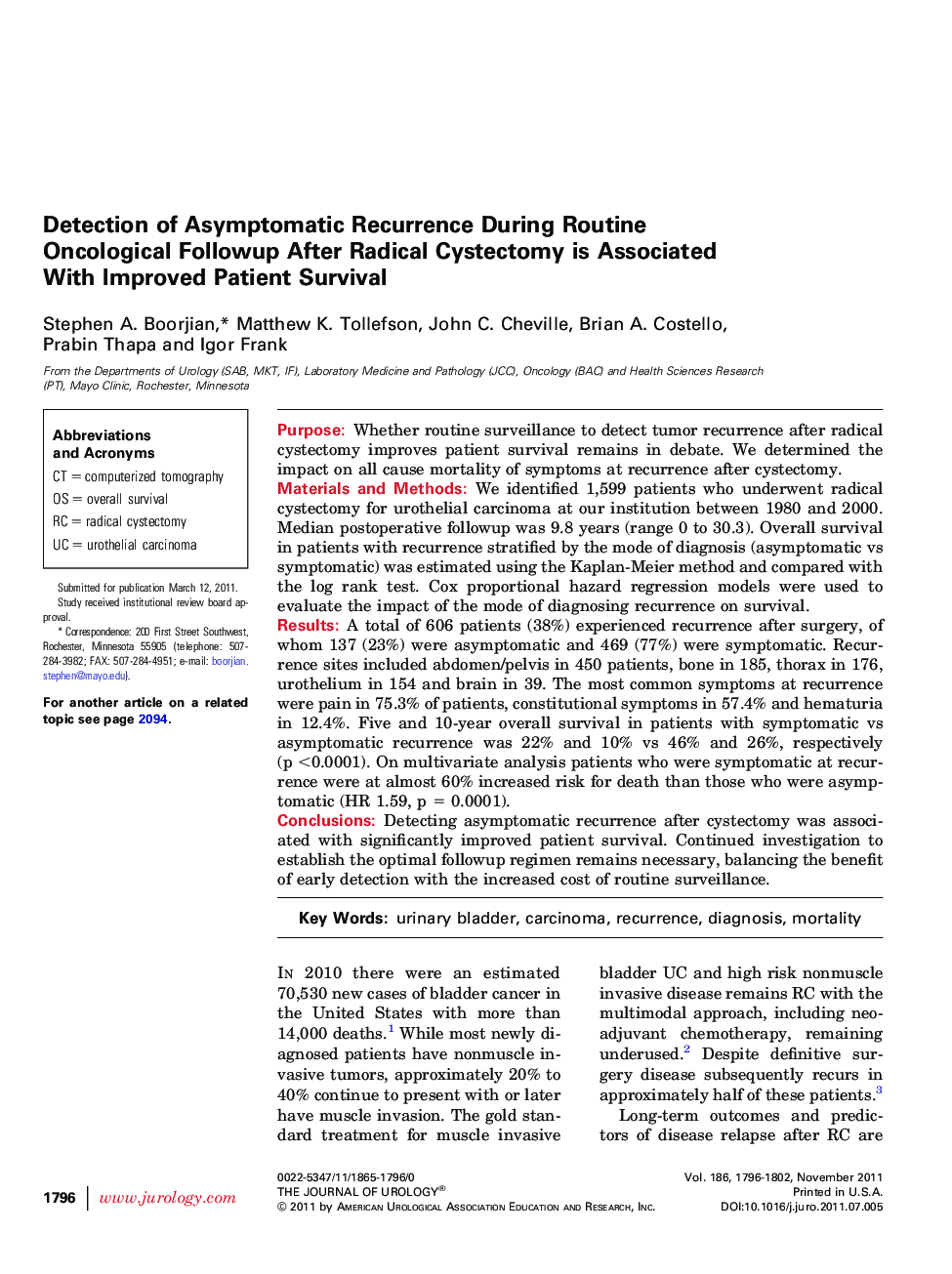| Article ID | Journal | Published Year | Pages | File Type |
|---|---|---|---|---|
| 3864356 | The Journal of Urology | 2011 | 7 Pages |
PurposeWhether routine surveillance to detect tumor recurrence after radical cystectomy improves patient survival remains in debate. We determined the impact on all cause mortality of symptoms at recurrence after cystectomy.Materials and MethodsWe identified 1,599 patients who underwent radical cystectomy for urothelial carcinoma at our institution between 1980 and 2000. Median postoperative followup was 9.8 years (range 0 to 30.3). Overall survival in patients with recurrence stratified by the mode of diagnosis (asymptomatic vs symptomatic) was estimated using the Kaplan-Meier method and compared with the log rank test. Cox proportional hazard regression models were used to evaluate the impact of the mode of diagnosing recurrence on survival.ResultsA total of 606 patients (38%) experienced recurrence after surgery, of whom 137 (23%) were asymptomatic and 469 (77%) were symptomatic. Recurrence sites included abdomen/pelvis in 450 patients, bone in 185, thorax in 176, urothelium in 154 and brain in 39. The most common symptoms at recurrence were pain in 75.3% of patients, constitutional symptoms in 57.4% and hematuria in 12.4%. Five and 10-year overall survival in patients with symptomatic vs asymptomatic recurrence was 22% and 10% vs 46% and 26%, respectively (p <0.0001). On multivariate analysis patients who were symptomatic at recurrence were at almost 60% increased risk for death than those who were asymptomatic (HR 1.59, p = 0.0001).ConclusionsDetecting asymptomatic recurrence after cystectomy was associated with significantly improved patient survival. Continued investigation to establish the optimal followup regimen remains necessary, balancing the benefit of early detection with the increased cost of routine surveillance.
